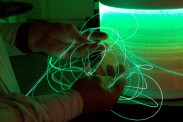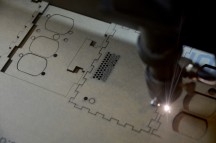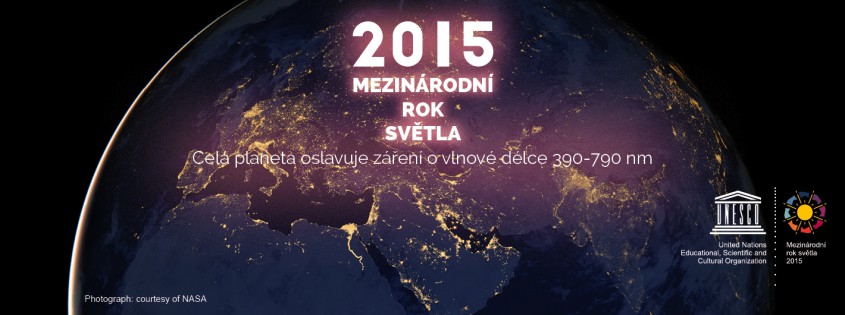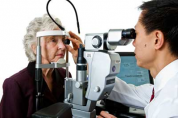International Year of Light
The year 2015 has been declared as the International Year of Light and light-based technologies at the 68th General Assembly of the UN. The aim of this is to remind citizens of the world of the significant role of light and optical technologies in everyday life and to show how optical technologies contribute to sustainable development and help address the major challenges of energy, engineering, healthcare, agriculture, food processing and communication technologies.
What is photonics?
Photonics is the science studying light, its generation, intensification, transmission, manipulation and detection. Light can be perceived either as a particle (photon) or as a wave (electromagnetic radiation).
Energetics and photonics
The Earth reseives most of its evergy from the Sun, which is our nearest star. Much of this energy is in the form of light radiation, which can be transformed into electricity and heat. Solar energy is a clean energy source and one of the solutions for sustainability. It is also an example of how politicians with their reckless decisions can distort the market environment and discredit the industry perspective, when they support other interest groups instead of applied research.
The ideal solution is a passive solar architecture with a well-designed light guide with minimal cooling or heating consumption of the stored solar energy or converted on the spot.
Global electricity consumption for lighting is about 20% of total produced electricity. Modern lighting devices based on LEDs are about 2x more economical than fluorescent lamps and 10x more efficient than heat lamps.
Communication systems
 Modern communication systems are based on optical fibers. Single-mode fibers allow the transfer of information at a speeds of 15 Tb/s (read terabits per second). Special fibers with 7 cores allow the transmission of up to 255 Tb/s. However, these fibers are made of silicia, which is one of the most widespread oxides on earth and the price of silicia fiber optics is only a fraction of the cost of traditional copper cables. Optical cables are used on long-distance routes between BTS and mobile networks and still more often lead all the way up to the house. Photonics is the underlying technology that enables rapid development of the Internet and mobile networks.
Modern communication systems are based on optical fibers. Single-mode fibers allow the transfer of information at a speeds of 15 Tb/s (read terabits per second). Special fibers with 7 cores allow the transmission of up to 255 Tb/s. However, these fibers are made of silicia, which is one of the most widespread oxides on earth and the price of silicia fiber optics is only a fraction of the cost of traditional copper cables. Optical cables are used on long-distance routes between BTS and mobile networks and still more often lead all the way up to the house. Photonics is the underlying technology that enables rapid development of the Internet and mobile networks.
Medicine
The development of optics in medicine caused several revolutions. The first revolution was due to the improvement of microscopes and optics due to the Danish scientist Antonia van Leeuwenhoek Philipse, who laid the foundations of microbiology. Glasses also improve the quality of human life, especially in a period when eyesight naturally weakens.
The second revolution is happening right now and is conditional to the use of lasers and advanced imaging and diagnostics methods. Endoscopes allow doctors to look inside the human body. Power and femtosecond lasers are increasing in application in eye surgery, surgery of urinary stones in dermatology and in dentistry. The advantage of this technique is sharp and contactsless cutting of tissues and removing even very small structures without damaging the surroundings and without infecting the wound.
Simple optical sensors have long been used for the determination of blood oxygen saturation. Complex optical biosensors allow for early diagnosis of cancer or Alzheimer's disease.
Lasers in industry
Laser technology used to be considered as an elusive technology to be reached in general industrial use. However, it has gained wider use in various applications over time precisely in industrial production. This sector now consists of several fields including laser welding, drilling, cutting, scribing, trimming, annealing, sputtering, and many others. The main advantage of laser technological operations is the possibility of shaping material without mechanical contact with the product itself, which allows working remotely, the possibility of working with hard to reach parts of the material and a processing technology of materials which can not be performed by conventional methods.
 Industrial use of lasers dates back to 1965 when an American company Western Electric Company made the first functional laser system, which was used for drilling diamond cubes. In 1967, it was followed by the development od a CO2-based laser which was used for cutting sheet metal and a laser for cutting titanium was developed in the 70s. Lasers have been and still are most widely used for cutting different kinds of materials. This technology has undergone tremendous development since the 60sThe performance of lasers has increased over time and with it came new application possibilities.
Industrial use of lasers dates back to 1965 when an American company Western Electric Company made the first functional laser system, which was used for drilling diamond cubes. In 1967, it was followed by the development od a CO2-based laser which was used for cutting sheet metal and a laser for cutting titanium was developed in the 70s. Lasers have been and still are most widely used for cutting different kinds of materials. This technology has undergone tremendous development since the 60sThe performance of lasers has increased over time and with it came new application possibilities.
The introduction of fiber lasers started the second stage in the evolution of lasers. Fiber lasers are the latest and most advanced type of lasers. Overall a very progressive and modern technology which is being used more and more in recent years. Thanks to its unique properties, it has replaced existing technologies in many applications and opened up more opportunities to use both laser cutting and welding, but lasers can also be used for hardening, welding, or even cleaning.
* * *
We will remember 12 eminent scientists of the 20th century, who had an indelible impact on the history of photonics and influenced, directly or indirectly, the activity of our institute within the 12 months of the International year of Light. The first one of this series is Charles Hard Townes who hared the 1984 Nobel Prize with N.G. Basov and A.M. Prokhorov for contributions to the development of quantum electronics and for the invention of the maser.




